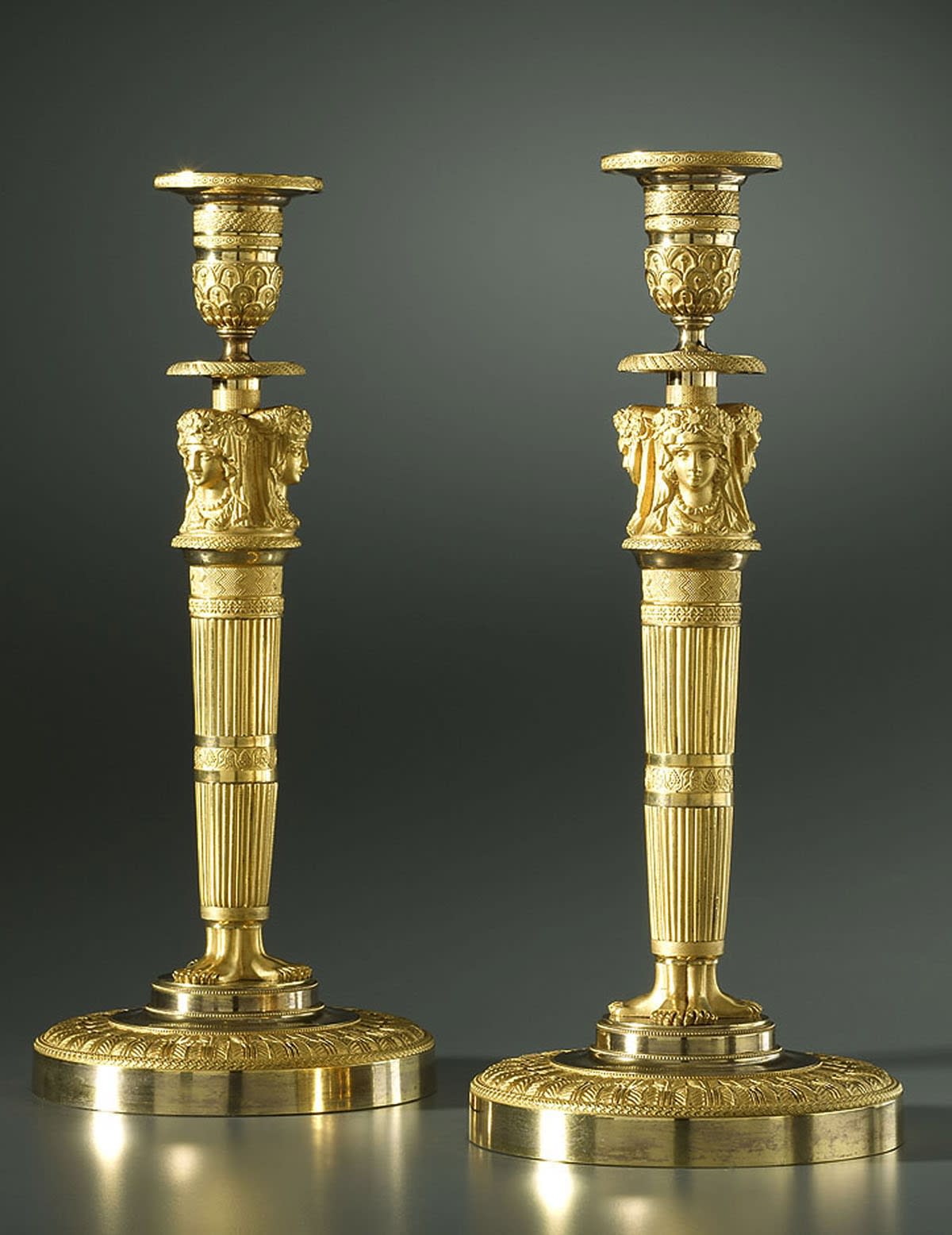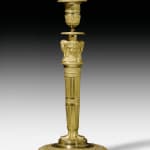Claude Galle (attributed to)
Further images
Literature
Hans Ottomeyer and Peter Pröschel, “Vergoldete Bronzen”, 1986, p. 326, pls. 5.1.6 and 5.1.7, respectively illustrating a similar candlestick with three Egyptian female herms and stem supported on human feet of circa 1810 and a design for a similar candlestick with Classical female caryatid busts, a fluted stem and three pairs of human feet but with less ornamentation and a ball-shaped nozzle, from a sheet in a trade catalogue of circa 1810, now in the Musée des Arts Décoratifs, Paris.
A very fine pair of Empire gilt bronze candlesticks attributed to Claude Galle each with a vase-shaped nozzle above a drip-pan supported on three Classical female caryatid heads, each wearing a foliate cast headdress and a string of beads around their neck above a tapering fluted stem supported on three pairs of human feet upon a spreading circular base cast with a stiff leaf border
Paris, date circa 1805-10
Height 33 cm. each.
These wonderful Empire candlesticks with Classical female herms are of a type often associated with the work of the leading bronzier Claude Galle (1759-1815), who supplied variants of this model to Château de Fontainebleau in 1804 (illustrated in Jean-Pierre Samoyault, “Pendules et bronzes d’ameublement entrés sous le Premier Empire; Catalogue des Collections de Mobilier, Musée National du Château de Fontainebleau”, 1989, p. 175, no. 155). It is also probable that they were made after a design by the leading Empire designer Charles Percier (1764-1838) since a comparison can be drawn with another pair with Egyptian female caryatids and fluted stems designed by Percier for Château de la Malmaison, illustrated in “Château de la Malmaison Texte Historique et Descriptif Dessinés Spécialement pour le Famille Impériale par Percier et Fontaine”.
A number of similar candlesticks made either in gilt and patinated bronze or in silver were made during the first decade of the nineteenth century. As noted some featured Egyptian female busts while others, such as the present pair, looked back to Classical Rome. By about 1810 candlesticks of this style were very fashionable among Parisian society, when their popularity was enhanced by publications for similar designs appearing in catalogues of the period which were used by the Parisian bronziers.





